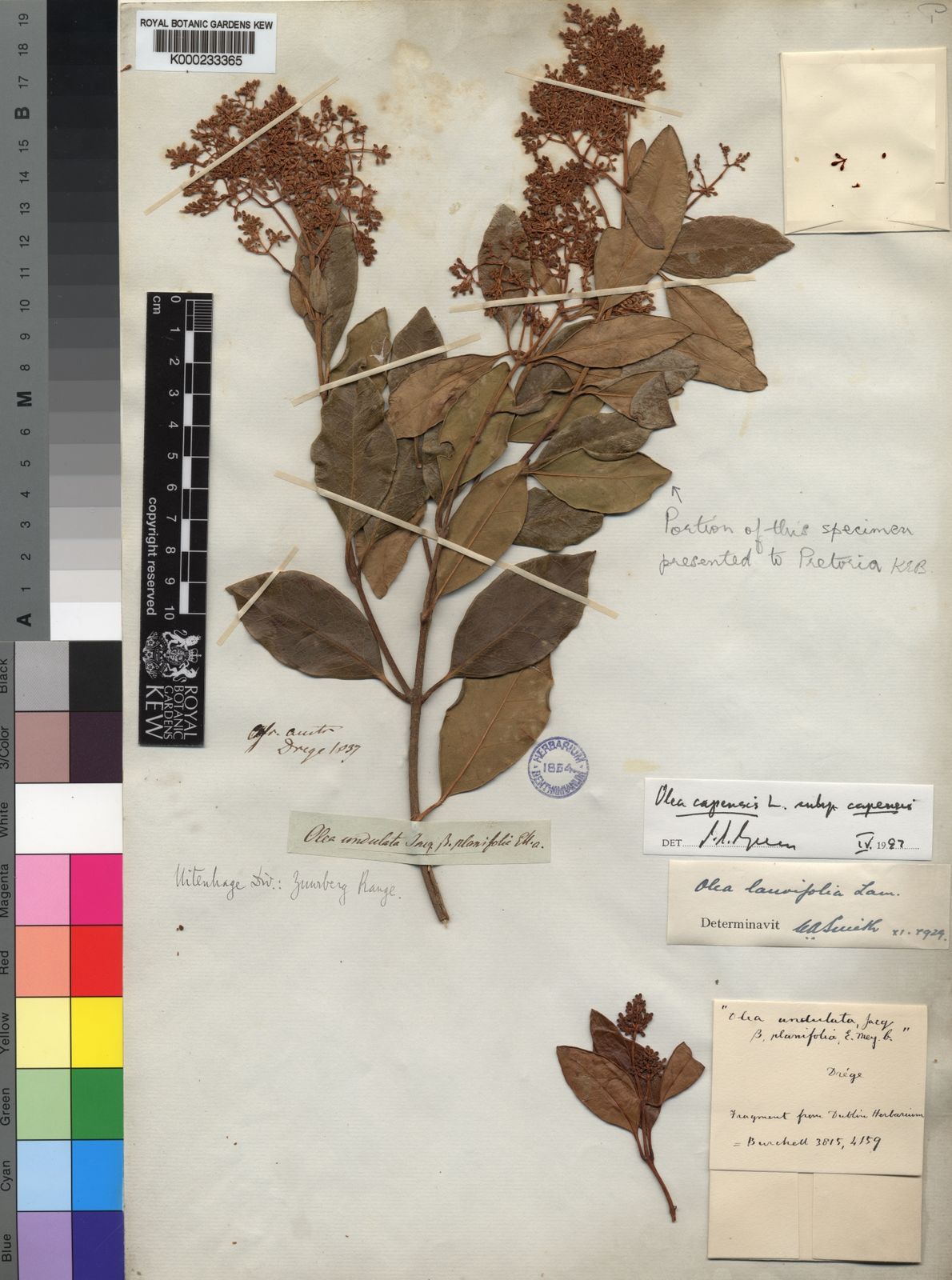Family: Oleaceae
Author: L.
Bibliography: Sp. pl. 1:8. 1753
Year: 1753
Status: accepted
Rank: species
Genus: Olea
Vegetable: False
Observations: Trop. & S. Africa, Comoros, Madagascar
Description
Black Ironwood: A Botanical Marvel
An Enduring Legacy
Black Ironwood, scientifically named Olea capensis, is a remarkable plant species attributed to the botanical authority of Linnaeus, dating back to its first mention in “Species Plantarum” in 1753. Renowned for its extraordinary density and resilience, it occupies an esteemed position within the Oleaceae family, captivating botanists and nature enthusiasts alike.
Geographic Distribution and Habitat
This resilient species flourishes predominantly in tropical and southern regions of Africa, extending its presence to the idyllic Comoros Islands and the diverse ecosystems of Madagascar. The varied climates and terrain of these regions provide an ideal backdrop for the Black Ironwood, enabling it to thrive and showcase its myriad of attributes.
Characteristics and Significance
The Black Ironwood is particularly noted for its incredibly dense and durable wood, which has likened it to iron in both strength and utility. This exceptional density renders the wood highly valuable, often utilized in construction, woodworking, and even intricate carvings. Furthermore, its ability to withstand extensive periods of drought and its resistance to pests signify its resilience, making it a symbol of strength and endurance in the plant kingdom.
Ecological and Cultural Impact
Beyond its physical properties, the Black Ironwood plays a vital role in its native ecosystems. It provides essential habitat and food sources for a variety of wildlife, contributing significantly to the ecological balance. Additionally, it bears cultural significance for the communities that inhabit these regions, often featured in traditional practices and local folklore.
Conservation and Future Prospects
Despite its resilient nature, the Black Ironwood faces challenges due to habitat destruction and overexploitation. Conservation efforts are paramount to ensure its survival and continued contribution to both ecological and cultural landscapes. By fostering sustainable practices and advocating for the protection of its natural habitats, we can help preserve this botanical marvel for future generations.
In summary, the Black Ironwood stands as a testament to nature’s ingenuity, embodying qualities of strength, resilience, and cultural significance. Its presence across tropical and southern Africa, the Comoros, and Madagascar underscores its adaptability and importance in both natural and human-altered landscapes. Through continued appreciation and conservation, the legacy of Olea capensis will endure for years to come.
Common Names
Eng: black ironwood, false ironwood, small ironwood
Afr: ijzerhout
En: Black ironwood, East African Olive, False Ironwood, Small Ironwood, Ironwood, Ijzerhout
Af: Ijzerhout, Ysterhout
Ar: زيتون رأس الرجاء
Zh: 南非黑鐵木, 黑铁木
Fi: Kenianoliivi
Lt: Afrikinis alyvmedis
Fa: انجیلی سیاه
Zh-hant: 黑鐵木
Synonyms
- Olea cassinifolia (Salisb.)
Distribution
- Burundi (native)
- Cameroon (native)
- Cape Provinces (native)
- Comoros (native)
- Ethiopia (native)
- Guinea (native)
- Gulf of Guinea Is. (native)
- Ivory Coast (native)
- Kenya (native)
- KwaZulu-Natal (native)
- Liberia (native)
- Madagascar (native)
- Malawi (native)
- Nigeria (native)
- Northern Provinces (native)
- Rwanda (native)
- Sierra Leone (native)
- Somalia (native)
- Sudan (native)
- Swaziland (native)
- Tanzania (native)
- Uganda (native)
- Zaïre (native)
Additional Images
Leaf
Taken Jul 19, 2022 by Maarten Vanhove (cc-by-sa)
Taken Jan 17, 2016 by Manie Maree (©)
Taken Jan 17, 2016 by Manie Maree (©)
Taken Jan 17, 2016 by Manie Maree (©)
Taken Jan 17, 2016 by Manie Maree (©)
Bark
Taken Jul 19, 2022 by Maarten Vanhove (cc-by-sa)
Taken Jul 31, 2022 by Maarten Vanhove (cc-by-sa)
Taken Jul 8, 2022 by joshua jebin (cc-by-sa)
Taken Jan 17, 2016 by Manie Maree (©)
Taken Jan 17, 2016 by Manie Maree (©)
Habit
Taken Jul 31, 2022 by Maarten Vanhove (cc-by-sa)

© copyright of the Board of Trustees of the Royal Botanic Gardens, Kew.
Sources
- WFO (No URL)
- IPNI (No URL)
- GBIF (https://www.gbif.org/species/7475694)
- POWO (http://powo.science.kew.org/taxon/urn:lsid:ipni.org:names:610645-1)
- PlantNet (https://identify.plantnet.org/species/the-plant-list/Olea capensis L.)











